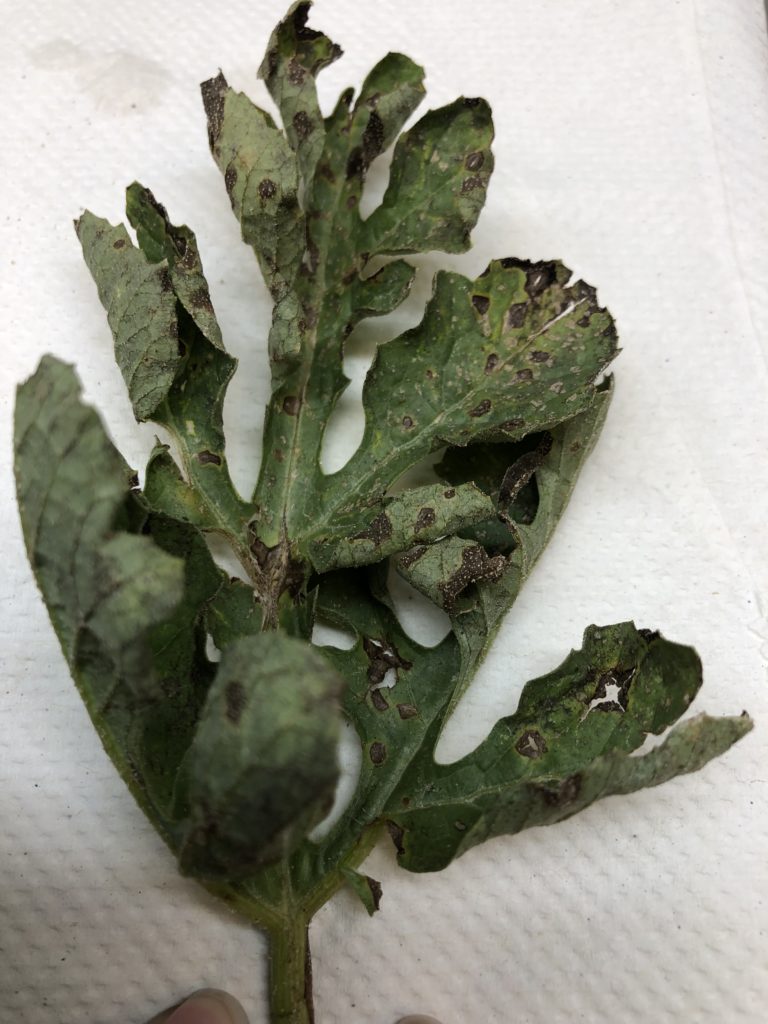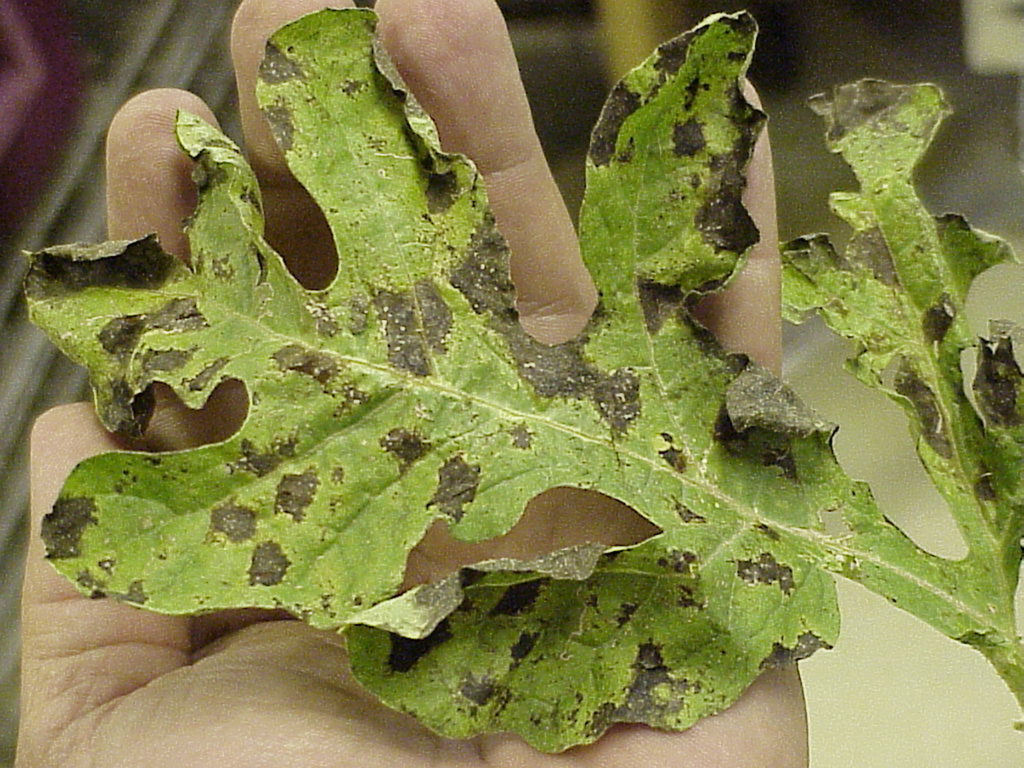
By Clint Thompson
Anthracnose and downy mildew provide similar disease symptoms in watermelons. Producers should be careful in self-diagnosing the potential disease in their crops this season.
Bhabesh Dutta, University of Georgia Extension vegetable plant pathologist, implores growers to consult Extension personnel when deducing what problem they might have. A wrong diagnosis could have financial repercussions.
“What we recommend is getting connected to the Extension agent and getting it confirmed as downy or not. The other way is to look at the stem lesions, and if there’s a stem lesion then it’s anthracnose. If there’s no stem lesions, then it’s more likely downy,” Dutta said. “That’s one tell-tell sign. We always recommend that growers, if they have any confusion, they need to connect with their respective Extension agent to confirm, and our clinic will help.

“(They require) completely different management options, completely different fungicides. Those fungicides do not overlap with each other. If you’re misdiagnosing downy with anthracnose, then that’s a much bigger problem, because you’ll be spraying for anthracnose which will not do any good on downy. Then you’ll be behind your sprays and be hard to catch up. If you misdiagnose anthracnose and still spraying for gummy, that may have some level on the spectrum. But you should not be misdiagnosing downy.”









